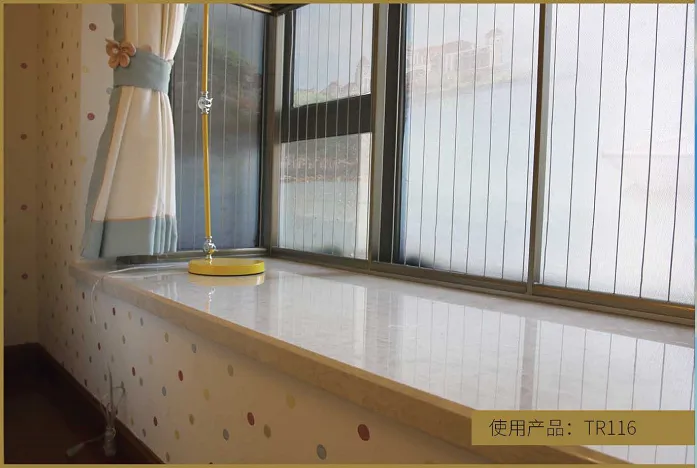In modern kitchen design, artificial stone kitchen countertops have gradually become the first choice for many families due to their diverse colors, durable materials and relatively reasonable costs. However, for those who choose and install artificial stone countertops for the first time, the process from selection to installation to daily maintenance may seem complicated and cumbersome.
In this article, we will introduce the advantages and disadvantages of artificial stone kitchen countertops, cleaning methods, color selection, edge options, faucet matching, cost and installation process in detail to help you fully understand the process and ensure that your kitchen is not only beautiful and practical, but also durable.

What are the advantages and disadvantages of artificial stone kitchen countertops?
Advantages of artificial stone kitchen countertops:
● Diverse designs: Artificial stone countertops have a wide range of colors and styles to choose from, which can meet the needs of kitchens of different styles.
● Strong durability: Artificial stone is sturdy and durable, with good scratch and stain resistance, which is very suitable for high-frequency use environments such as kitchens.
● Seamless splicing: Unlike natural stone, artificial stone can achieve seamless splicing, making the countertop look more beautiful and tidy.
● Easy to maintain: Artificial stone countertops do not require complicated maintenance, and only daily cleaning is needed to keep them as bright and clean as new.
Disadvantages of artificial stone kitchen countertops:
● Higher cost: Although cheaper than some high-end natural stones, the price of artificial stone countertops is still relatively high.
● Poor heat resistance: Artificial stone is not as heat-resistant as natural stone, and long-term exposure to high temperatures may cause deformation or damage.
● May fade: Artificial stone countertops may fade after long-term exposure to sunlight, and you need to be careful to avoid direct sunlight.

How to clean artificial stone kitchen countertops?
Daily cleaning of artificial stone kitchen countertops is very simple, just wipe with warm water and neutral detergent. For stubborn stains, you can use a non-abrasive detergent and a soft cloth to wipe gently. The most important thing to remember is to never clean artificial stone kitchen countertops with acidic or harsh cleaners (such as Windex, vinegar, lime or lemon) or anything containing bleach or ammonia. Harsh cleaners will weaken and eventually destroy your sealant.
Cleaning tips:
● Daily cleaning: Wipe the countertop with warm water and neutral detergent every day to keep it clean and hygienic.
● Stubborn stains: For stains that are difficult to remove, you can use toothpaste or baking soda to gently wipe it, and then rinse it with clean water.
● Avoid sharp objects: Avoid cutting food directly on the countertop. Using a cutting board can effectively protect the countertop.
How to choose the color of artificial stone kitchen countertops?
The color options of artificial stone countertops are very diverse, from pure white to dark black, from monochrome to patterns, all kinds of colors and patterns are available. Choose a color that matches the overall style of the kitchen to ensure that the countertop is coordinated with the colors of the cabinets, floors and walls. The natural light conditions in the kitchen will affect the presentation of the countertop color. Kitchens with darker light are suitable for light-colored countertops, while dark countertops can be selected. Of course, personal preference is also an important factor in choosing colors. After all, the kitchen is your daily space, and choosing your favorite color can enhance the user experience.
Edge options for artificial stone kitchen countertops
The edge styles of artificial stone kitchen countertops are varied, and different edge treatments can bring different visual effects and practicality. Common edge styles include straight edge, round edge, bevel edge, bullnose edge, etc.
If there are children in the family, choosing round edge or bullnose edge can reduce the risk of collision injury. Different edge styles will affect the overall aesthetics of the countertop. You can choose the appropriate edge style according to the style of the kitchen. Some special edge treatments can increase the usable space of the countertop, such as waterfall edge treatment, which can visually extend the length of the countertop.
Choose the best artificial stone kitchen countertop faucet
Choosing the right artificial stone kitchen countertop faucet can not only improve the practicality of the kitchen, but also increase the aesthetics. Stainless steel and brass are common faucet materials, which are durable and easy to clean. Choosing a material that matches the countertop and cabinet can improve the overall aesthetics. Single-handle and double-handle faucets have their own advantages and disadvantages. Single handles are easy to operate, while double handles can control the water temperature more accurately. Choosing a faucet with a pull-out nozzle or a rotating water outlet can increase the convenience of use. The height of the faucet should be moderate, which should be convenient for cleaning large kitchen utensils, but not too high to cause splashing.

What is the cost of artificial stone kitchen countertops?
The cost of artificial stone kitchen countertops varies depending on factors such as material, color, thickness, edge treatment, etc. Generally speaking, the price of artificial stone countertops ranges from $50 to $100 per square foot. High-end artificial stone materials such as quartz are more expensive, while ordinary polyester artificial stone is cheaper. Artificial stone countertops with special colors and patterns are more expensive, while regular colors are relatively cheap. Complex edge treatments increase the cost of countertop production, while simple edge treatments are more economical. If you choose professional installation, the installation fee will also affect the overall cost, usually between $10 and $20 per square foot.

How to install artificial stone kitchen countertops?
The installation process of artificial stone kitchen countertops is relatively simple, but it still requires professional skills and tools. Here are the detailed steps of the installation process:
Preparation before installation:
1. Measurement and design: Accurately measure the size and shape of the kitchen countertop and design a suitable artificial stone countertop.
2. Prepare tools: Prepare tools such as cutters, polishers, adhesives, and fixing fixtures.
Installation process:
1. Cutting and polishing: Cut the artificial stone slabs according to the measured size and polish the edges.
2. Gluing and fixing: Place the cut countertop on the cabinet, fix it with adhesive, and fix it with a fixing clamp until the adhesive dries.
3. Joint treatment: Seamlessly splice the joints of the countertop to ensure that the countertop is beautiful and neat.
4. Install faucets and sinks: Install faucets and sinks according to the design and seal them to prevent water leakage.
After installation:
1. Cleaning and inspection: Clean the countertop after installation to check for water leakage or loose bonding.
2. Precautions for use: After installation, avoid placing heavy objects on the countertop or direct contact with high-temperature objects to extend the service life of the countertop.
I hope this article can help you make wise decisions during kitchen decoration and create an ideal kitchen that is beautiful and practical.

